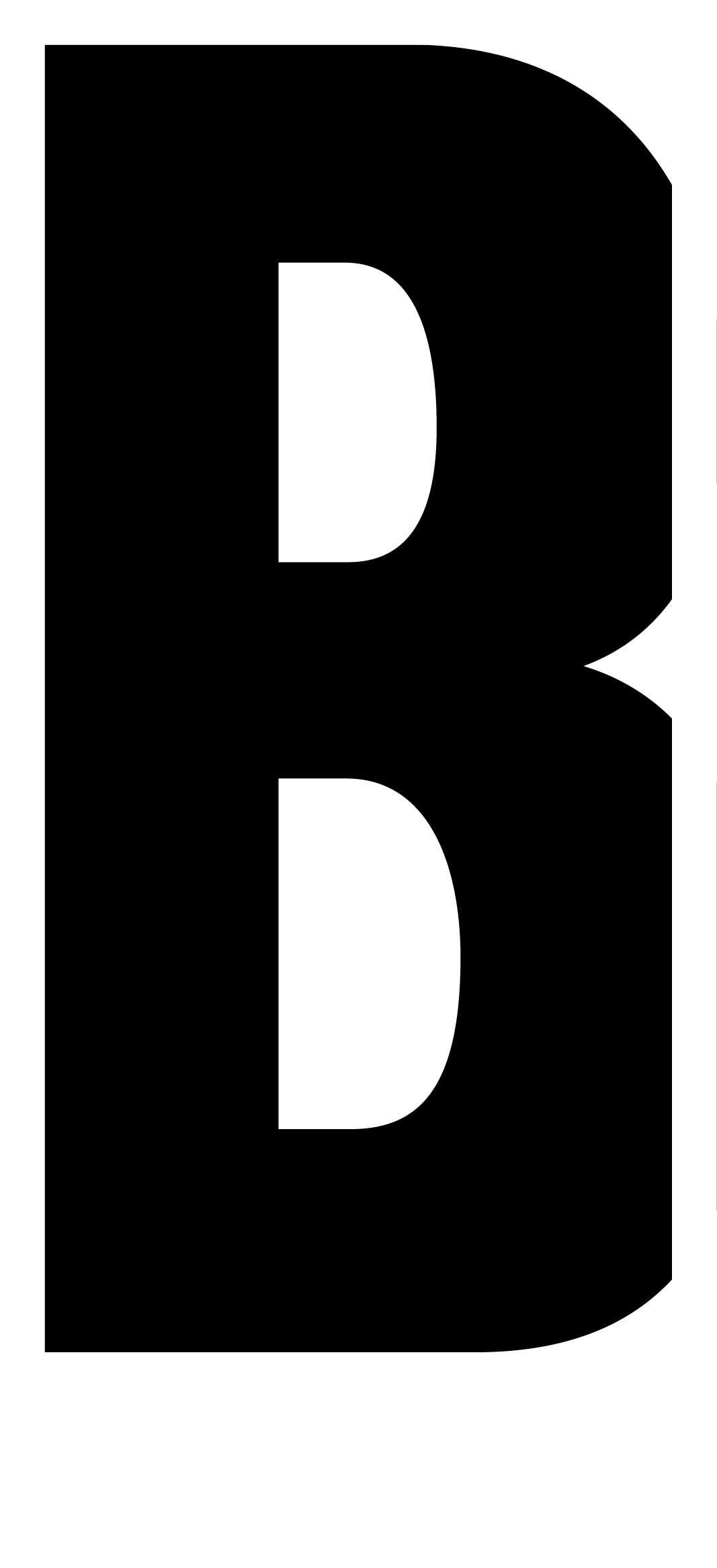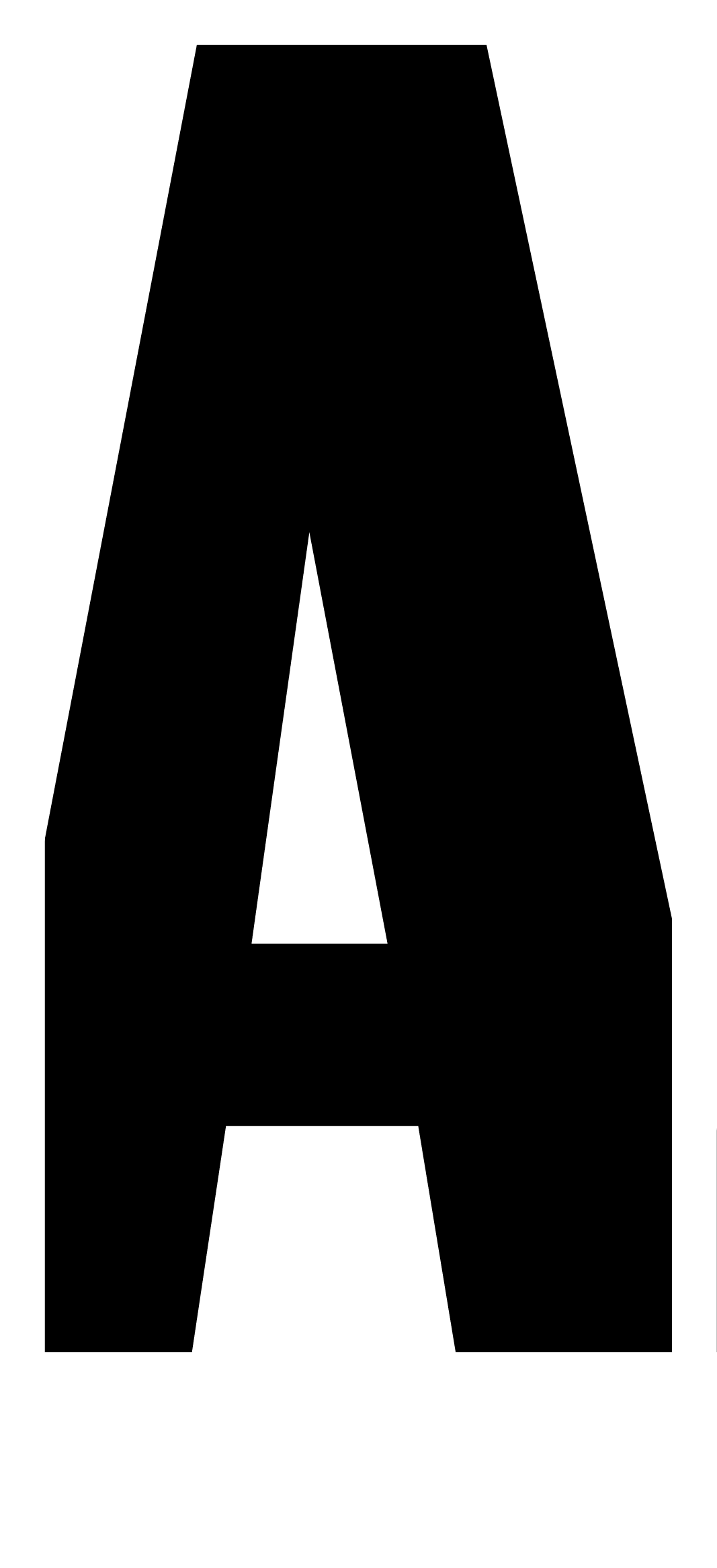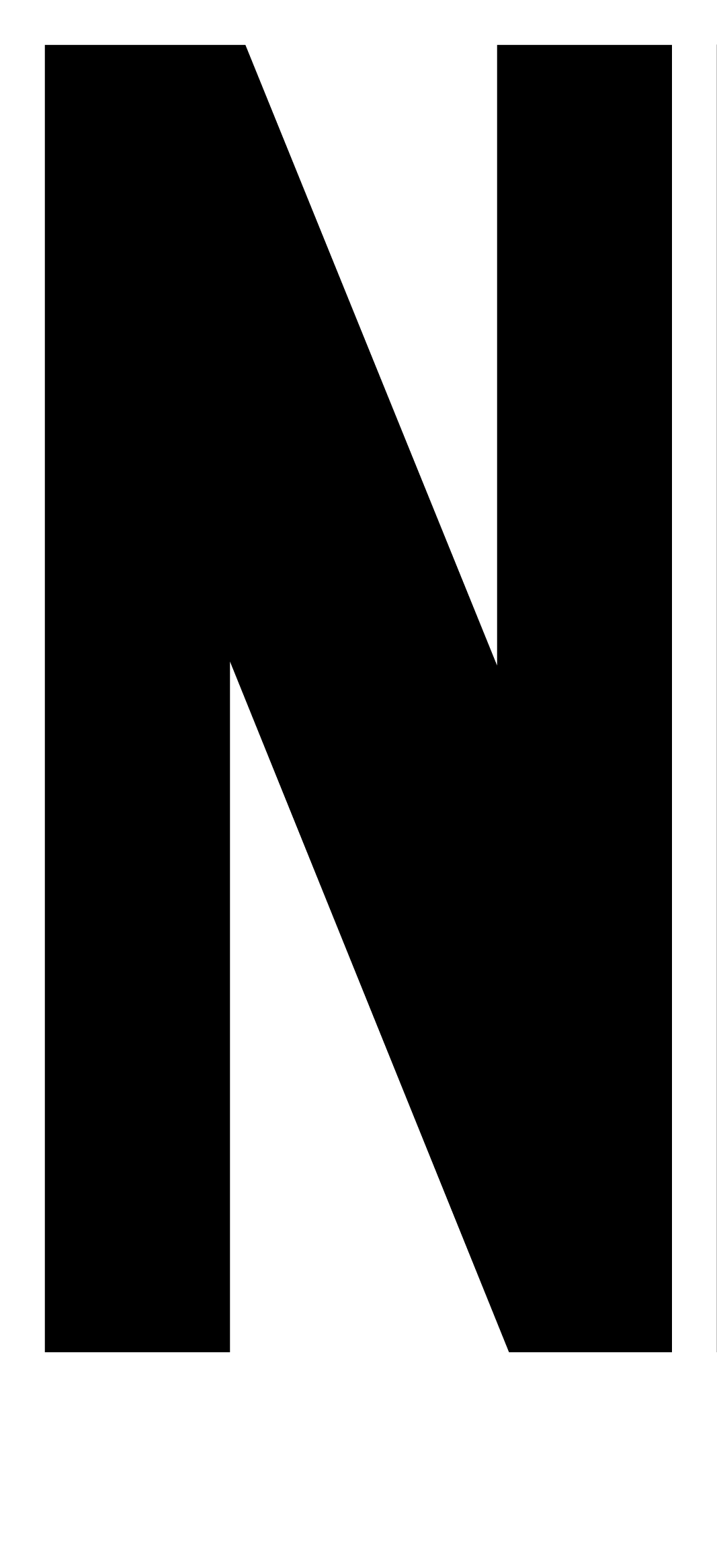“On May 2, 1967, thirty armed Panthers […] went to the Californian State Capitol in Sacramento to protest the Mumford Act, that repealed a law allowing public carrying of loaded firearms. The Black Panther Party burst upon America’s consciousness when media from all over the world covered this protest” (Shames 2016, 27)
This timeline is constructed through a variety of sources, which are 'sampled' and remixed in chronological order. There is no need to rewrite the writings of these authors. We are standing on the shoulders of giants.
References
Bloom, Joshua, and Waldo E. Martin. Black against Empire: The History and Politics of the Black Panther Party. University of California Press, 2013.
Durant, Sam (ed). Black Panther, The Revolutionary Art of Emory Douglas. Rizzoli, 2007.
Nelson, Stanley. The Black Panthers: Vanguard of the Revolution. Netflix, 2015
Shames, Stephen and Bobby Seale. Power to the People : The World of the Black Panthers. Abrams, 2016
Vincent, Rickey. Party Music : The Inside Story of the Black Panthers’ Band and How Black Power Transformed Soul Music. Lawrence Hill Books, 2013.
1966
10.22.1966 — “On October 22, 1966, […] Huey and I founded the party. In the first twee weeks there were six members. They were Reggie and Sherwin Forte. Little Bobby Hutton. Elbert “Big Man” Howard. Myself. And Huey P. Newton.” (Bobby Seale in Shames 2016, 23)
10.29.1966 — “Disseminated nationally by Stokely Carmichael, the Black Panther Party name and logo first appeared in the Oakland Bay Area on this flier for a Black Power conference on October 29, 1966, featuring Carmichael and organized by the Students for a Democratic Society.” (Bloom 2016, 162)
1967
“In early 1967, the Black Panther Party for Self-Defense had only a handful of members. The organization had received no coverage in the press and was known only by those with whom the Party had direct contact, or through word of mouth. By February this began to change.” (Bloom 2016, 48)
02.21.1967 — “In the early afternoon of February 21, eight members of Newton and Seale’s Black Panther Party for Self-Defense, dressed in uniform—waist-length leather jackets, powder blue shirts, and black beret cocked to the right— met up with […] members of the RAM-affiliated group […] to provide an armed escort for [Betty] Shabazz [Malcolm X’s widow] [from] the [San Francisco] Airport to the office of Ramparts magazine for an interview with Eldridge Cleaver.” (Bloom 2016, 49)
04.01.1967 — “In the early morning of April 1, in North Richmond, California, Deputy Sheriff Mel Brunkhorst shot Denzil Dowell, black and unarmed, in the back and head as he ran away. Dowel was left bleeding without medical attention and died lying in the street.” (Bloom, 2016, p. xiii)
04.25.1967 — On April 25, the first issue of “The Black Panther: Black Community News Service” was published. “I [Bobby Seale] founded our Black Panther Party newspaper, and, with “Big Man” Elbert Howard […] and L’il Bobby Hutton, we wrote, laid out, typed, and mimeographed one thousand copies of the Black Panther newspaper’s very first edition.” (Seale in Douglas 2007, foreword)
05.02.1967 — “On May 2, 1967, thirty armed Panthers and their supporters went to the Californian State Capitol in Sacramento to protest the bill [Mumford Act, a California bill that repealed a law allowing public carrying of loaded firearms; “no one can carry a loaded weapon within city limits”]. The Black Panther Party burst upon America’s consciousness when media from all over the world covered this protest” (Shames 2016, 27)
07.28.1976 — “In response to the Panthers’ police patrols, Governor Ronald Reagan of California signed the Mulford Act in 1967 [July 28]” (Shames in Shames 2016, 27) “They did it because of the Black Panther Party. […] I’m not going to go out and patrol police without a loaded weapon. So we stopped patrolling.” (Seale in Shames 2016, 27)
05.1967 — In May, after Sacramento, Eldridge Cleaver joined the party and became the minister of information.
05.15.1967 — “Starting with the second issue of the Black Panther, on May 15, 1967 […], every one of the newspaper’s 537 issues contained the Party’s ten-point platform and program, titled “What We Want Now! What We Believe,” which emphasized the Party’s commitment to advancing a revolution the addressed the needs and interests of the black community.” (Bloom 2016, 70) “The Party’s original Ten Point Program and Newton’s essay “The Functional Definition of Politics,” both published in the second issue of the Black Panther, on May 15, 1967, employed the foundational Marxist concept of “means of production.” (Bloom 2016, 311) “It was Emory [Douglas] who laid out the next [second] issue to be printed on a roll press and on real newsprint.” (Seale in Douglas 2007, foreword)
05.15.1967 — On May 15, the picture of Huey in the wicker-chair together with Ten-Point program was published in the 2nd edition of the “The Black Panther: Black Community News Service”.
08.25.1967 — “On August 25, 1967, FBI director J. Edgar Hoover sent a memo to twentythree FBI field offices around the country instructing agents to initiate counterintelligence activities against black nationalist organizations.” […] “The memo targeted six “black nationalist hate-type” organizations. Most revealing was the inclusion of King’s Southern Christian Leadership Conference on the list.” […] (Bloom 2016, 201) “The Black Panther Party, at the time still a local organization in the Oakland Bay Area, was not mentioned.” (Bloom 2016, 202)
10.28.1967 — On October 28, Newton was arrested for the killing of John Frey, an Oakland Police Department officer.
“There are conflicting accounts of what happened near the corner of Seventh and Cambell Streets in Oakland that morning. In the murder trial that followed the incident, the jury was not able to put together a clear and compelling account from the evidence and testimony presented in the courtroom. But at some point during the early hours of the day, Newton and Gene McKinney arrived at David Hilliard’s house. Newton had a gunshot wound in his abdomen, so David and his brother June Hilliard rushed Newton to the Kaiser Hospital emergency room. Soon the story was all over the news: Officer Frey was dead, and Huey P. Newton, minister of defense for the Black Panther Party, had been arrested as the prime suspect in his murder.” (Bloom 2016, 101)
11.1967 — “Three weeks after Huey Newton’s arrest [half November 1967], Kathleen [Neal] moved to San Francisco to join the Black Panther Party. Another month and a half later, just after Christmas 1967, Kathleen and Eldridge were married.” (Bloom 2016, 106)
12.08.1967 — On December 8, after serving four months for the Sacramento event, Bobby Seale was released.
12.22.1967 — “The coalition [between Black Panther Party and the Peace and Freedom Party] was announced on December 22, 1967.” (Bloom 2016, 109)
1968
01.1968 — “In January 1968, Eldridge Cleaver recruited Alprentice “Bunchy” Carter to organize a chapter of the Black Panther Party in Los Angeles [the first outside the Oakland Bay Area].” (Bloom 2016, 143). “When Martin Luther King Jr. was killed in April, the Black Panther Party quickly became the dominant presence in the Los Angeles Black Power scene.” (Bloom 2016, 145)
01.28.1968 — “As the Black Panther Party promoted the “Free Huey!” campaign, it built on emerging alliances with students and white antiwar activists, advancing an anti-imperialist political ideology that linked the oppression of antiwar protestors to the oppression of blacks and Vietnamese. Bobby Seale elaborated this position at a January 28, 1968, rally at UC Berkeley supporting students who had been arrested during Stop the Draft Week.” (Bloom 2016, 110)
02.17.1968 — February 17, the first Free Huey Rally at the Oakland Auditorium, which presented a merger between SNCC (Stokely Carmichael, H. Rap Brown) and Black Panther Party. “Speakers at the Huey Newton birthday celebration at the Oakland Auditorium, February 17, 1968, include, from right to left, Alprentice “Bunchy” Carter, leader of the newly founded Los Angeles Black Panther Party chapter […]; Student Nonviolent Coordinating Committee leaders James Forman, H. Rap Brown, and Stokely Carmichael; Bobby Seale; Carver Chico Nesbitt; unknown boy; and Ron Dellums. The renowned SNCC leaders were exploring a merger with the Black Panther Party at the time. The empty wicker throne highlights Newton’s absence, as he sat in prison awaiting his trial on capital charges. (© Dr. Huey P. Newton Foundation)” (Bloom 2016, 167)
02.18.1968 — “[Another] “Free Huey!” rally was planned in Los Angeles on February 18, 1968 […] [by] a wide array of organizations in the Black Congress, including Karenga’s US.” (Bloom 2016, 145) “The February 18 rally drew at least five thousand people. Speakers included Bobby Seale, Stokely Carmichael, H. Rap Brown, James Forman, Ron Karenga, and radical Chicano activist Reis Tijerina.” (Bloom 2016, 145)
02.29.1968 — February 29, a memorandum of the FBI regarding “militant Black Nationalists’ was issued, which is the start of the Counter Intelligence Program (COINTELPRO). The goal was “to prevent the coalition of militant black nationalist groups, prevent the rise of a leader who might unify ans electrify the violent-prone elements, prevent these militants from gaining respectability and prevent the growth of these groups among American’s youth.” (Carson in Vincent, 2013, p238).
03.1968 — “[…] Newton’s Executive Mandate No. 3, issued from prison in March 1968, ordered all Panther members to obtain firearms, and to fire on anyone — including police — who attempted to enter their homes without peaceably producing a legal warrant.” (Bloom 2016, 159-60)
03.04.1968 — “On March 4, 1968, J. Edgar Hoover expanded the COINTELPRO against black nationalists to forty-one field offices, and in a new memo established the following five long-term goals for the program.” (Bloom 2016, 202)
03.16.1968 — “In the next [March 16, 1968] issue [after the free Huey Rally of February 17, 1968] of The Black Panther, the Party dropped “for Self-Defence’ from its name and became simply the Black Panther Party.” (Bloom 2016, 114)
04.1968 — “[George Mason Murray] joining the Central Committee as minister of education by April 1968.” (Bloom 2016, 269)
04.04.1968 — “On Thursday, April 4, 1968, at 6:01 P.M., Martin Luther King Jr. stepped onto the balcony outside his second-floor room at the Lorraine Hotel in Memphis, Tennessee. […] A shot rang out, and the bullet tore through the base of the right side of King’s neck. An hour later, at 7:05, doctors at St.Joseph Hospital pronounced King dead.” (Bloom 2016, 115) “At the time of the killings of Martin Luther King Jr. and Bobby Hutton in early April of 1968, the Black Panther Party was essentially a local organization based in Oakland, with a satellite chapter beginning to organize in Los Angeles.” (Bloom 2016, 159) “As Kathleen Cleaver later recalled, “The murder of King changed the whole dynamic of the country. That is probably the single most significant event in terms of how the Panthers were perceived by the black community.”” (Bloom 2016, 159) “While Black Power was a key influence on the emerging draft resistance movement, the Black Panther Party remained relatively insignificant politically until April 1968.” […] “This situation changed with the assassinations of King and Hutton.” (Bloom 2016, 133)
04.06.1968 — “On the evening of April 6, two days after King’s death, at a little after 9:00 p.m., three carloads of armed Black Panthers pulled over to the curb on Union and 28th Streets in largely black west Oakland. […] A moment later, several police cars pulled up and shined a spotlight on [Eldridge] Cleaver. Words were exchanged, then gunfire. The Panthers ran for cover, the police quickly cordoned off a two-block area, […]. An hour and a half later, […] Lil’ Bobby Hutton emerged from the basement unarmed. Police shot him dead.” (Bloom 2016, 119). Cleaver was also wounded during the ambush.
“But when King and Hutton were killed, a new day arrived. As the federal government inched toward establishing a national holiday in honor of Martin Luther King Jr., Hutton became the first martyr of the Panther revolution.” (Bloom 2016, 122)
04.12.1968 — “At the April 12 funeral for Hutton, two thousand people packed into the Ephesian Church of God in Christ in Berkeley, with a hundred uniformed Black Panthers forming the honor guard. […] Seale cried out, “Free Huey!” and the crowd answered: “Free Huey!” (Bloom 2016, 119) “On April 12, 1968, SDS affirmed its support for the Black Panther Party: “Students for a Democratic Society . . . demands the immediate release of Eldridge Cleaver, Huey P. Newton, and all other political prisoners being detained by the state of California.”” (Bloom 2016, 134). “When [after attending Bobby Hutton’s funeral on April 12, 1968] the Dixon brothers [Aaron and Elmer] returned to Seattle, they rented an office and opened the first chapter of the Black Panther Party outside of California. Within two months, more than three hundred people joined the chapter, women as well as men.” (Bloom 2016, 147)
04.15.1968 — “On April 15, the cover of New Left Notes featured a photo of Bobby Hutton and a long article on the Panthers under the headline “Oakland Police Attack Panthers.” (Bloom 2016, 134)
04.1968 — “By the spring of 1968, we heard that representatives from the [Black Panther Party] were coming to New York and there was a possibility of organizing a chapter. I attended the meeting and decided to join and help build the [Party] in New York.” (Sekou Odinga in Bloom 2016, 152) “In the weeks following King’s assassination, the Black Panther Party also opened a chapter in New York City’s Harlem.” (Bloom 2016, 148) “In April, just weeks after King’s death, Joudon Ford took the reins as the new captain for the New York Black Panther Party, setting up a temporary office in the SNCC headquarters in downtown Manhattan.” (Bloom 2016, 149) “Two of the first New Yorkers to join the Black Panther Party were Lumumba Shakur, appointed section leader for Harlem, and Sekou Odinga, named section leader for the Bronx.” (Bloom 2016, 150)
“In the spring of 1968, the Black Panthers joined forces with the Student Nonviolent Coordinating Committee to begin discussions with Third World representatives in the United Nations in an effort to advance their program. The Panthers sought support for the “Free Huey!” campaign and for a proposed black plebiscite.” (Bloom 2016, 122)
05.14.1968 — “On May 14, [1968] Kathleen Cleaver announced Eldridge [Cleaver]’s candidacy for the Peace and Freedom Party nomination for president. […] along with […] Kathleen Cleaver’s campaign for the California State Assembly.” (Bloom 2016, 124)
05.20.1968 — “On May 20, [1968] the Black Panther Party held a benefit performance at the Fillmore East in the East Village [New York] to help raise $200,000 bail for Eldridge Cleaver and six other Panthers arrested in the April 6 shootout in Oakland. The benefit, which featured several plays and performances by Amiri Baraka (LeRoi Jones) and Ed Bullins, drew twentysix hundred people. James Forman of SNCC was the event’s emcee, and Kathleen Cleaver spoke about Lil’ Bobby Hutton’s martyrdom and her husband’s case.” (Bloom 2016, 149)
07.1968 — “In July, the SDS convention passed a major resolution in support of the Black Panthers asserting that “Huey must be set free!” They pledged to “give full support, in whatever manner is needed,” both to free Huey and to support the Panthers generally.” (Bloom 2016, 134)
07.14.1968 — “Bobby Seale speaks at a “Free Huey!” rally in “Lil’ Bobby Hutton Park” on July 14, 1968. The bus and sound system were on loan from the Peace and Freedom Party. James Forman (seated middle) and Chief of Staff David Hilliard (seated right) share the stage with Seale. (© 2011 Pirkle Jones Foundation / Ruth- Marion Baruch)” (Bloom 2016, 170)
07.15.1968 — “Monday July 15 marked the opening day of Huey Newton’s trial on charges of murdering a police officer. The Panthers argued that Newton, not Officer Frey, was the one who had been attacked and that the trial was yet another act of political repression. They brought their case to the court of public opinion, organizing a rally in front of the imposing granite Alameda County courthouse in Oakland that morning.” (Bloom 2016, 135)
08.1968 — “When [George Mason] Murray [Black Panther Minister of Education] traveled to Cuba in August 1968 to promote the “Free Huey!” campaign [and to represent the Black Panthers at a conference sponsored by the Organization of Solidarity with the People of Asia, Africa and Latin America (OSPAAAL)], leaders of anticolonial and revolutionary movements around the globe embraced the Panthers.” (Bloom 2016, 270)
08.25.1968 — “On August 25, the Panthers held a rally at De Fremery Park in west Oakland that they ceremoniously renamed Bobby Hutton Memorial Park in honor of the martyred Panther youth.” (Bloom 2016, 125)
08.1968 — “The Democratic nomination and the party’s position on Vietnam would be decided at the Democratic National Convention that August in Chicago. […] Organizers also invited the Black Panthers to speak. In late August [1968], Bobby Seale and David Hilliard flew to Chicago.” (Bloom 2016, 207) At the Democratic National Convention in Chicago, Bobby Seale was arrested and charged with conspiracy and inciting riot outside of the convention.
“By the fall of 1968, membership in the Black Panther Party was mushrooming. […] As Party membership and influence grew, so did repressive action by the state. The Party sought meaningful activities for members that would serve the community, strengthen the Party, and improve its image in the public relations battle with the state. In this context, community programs quickly became a cornerstone of Party activity nationwide.” (Bloom 2016, 181)
“By the fall of 1968, as the Party became a national organization, it had to manage the political ramifications of actions taken by loosely organized affiliates across the country. The Central Committee in Oakland codified ten Rules of the Black Panther Party and began publishing
them in each issue of the Black Panther.” […] “The Party insisted that Panthers use weapons only against “the enemy” and prohibited theft from other “Black people.” But they permitted disciplined revolutionary violence and specifically allowed participation in the underground insurrectionary “Black Liberation Army.” (Bloom 2016, 343)
“SDS published Newton’s ideas about the white New Left as a pamphlet and distributed it nationwide that fall [1968], in coordination with “Free Huey!” actions. (Bloom 2016, 297)
“But by the fall of 1968, the FBI was secretly developing what would become its most intensive program to repress any black political organization. Of 295 actions initiated by the FBI’s Counterintelligence Program to destabilize black nationalist organizations, 233 of them — or 79 percent — targeted the Black Panther Party.” (Bloom 2016, 210)
09.1968 — “While the FBI did not mention the Black Panther Party in earlier COINTELPRO memos targeting black nationalist organizations, the agency now [September 1968] began to focus its attention on the Panthers.” (Bloom 2016, 203)
09.08.1968 — “On Sunday night September 8, 1968, Newton was convicted of manslaughter in the killing of Officer Frey and sentenced to two to fifteen years in prison.” (Bloom 2016, 199)
09.10.1968 — “About thirty hours after Newton’s conviction, at 1:30 in the morning on September 10, two white on-duty uniformed police officers shot up the windows and office of the Black Panther headquarters at 4421 Grove Street in Oakland.” (Bloom 2016, 199)
10.28.1968 — “On October 28, 1968, the one-year anniversary of Huey Newton’s incarceration, Donald Cox, field marshal of the Black Panther Party, and a contingent of five other Panthers visited San Francisco State. Murray called a BSU rally.” (Bloom 2016, 273)
11.01.1968 — “While [Bobby] Rush and [Fred] Hampton teamed up in June 1968, the Black Panther national office did not officially recognize the chapter until October, and the first Chicago office was not opened until November 1, 1968.” [Bloom 2016, 231]
11.05.1968 — “On November 5, by the thinnest of margins, Nixon was elected the thirty-seventh president of the United States. From the first days of his presidency, Nixon took a personal interest in repressing the Black Panther Party.” (Bloom 2016, 210)
11.28.1968 — “After the loss of Bobby Hutton, Eldridge [Cleaver] was ordered to surrender to San Francisco Police to go back to prison, but on November 28, 1968, he didn’t turn himself in, and he was not to be found. […] He had gone to Algeria.” — Kathleen Cleaver (Nelson, 2015)
11.29.1968 — “On Friday November 29, 1968, fifteen hundred delegates from throughout the Americas gathered in Montreal for the Hemispheric Conference to End the War in Vietnam. […] The Black Panther Party sent a delegation led by Bobby Seale and David Hilliard and including a dozen rank-and-file Panthers from various chapters.” (Bloom 2016, 309)
12.25.1968 — “After Eldridge Cleaver went underground in the late fall of 1968, he clandestinely traveled to Cuba, arriving on Christmas day. [December 25, 1968]” (Bloom 2016, 314)
“By 1968 the Black Panther Party was established as the most prominent Black Nationalist organization, and its newspaper the Black Panther had a weekly circulation of more than 100.000 copies.” (Vincent, 2013, p190). “[…] [Y]oung activists from around the country contacted the Party asking how they could join, and the Party responded by opening new Black Panther offices in Los Angeles, New York, Seattle, and at least seventeen other cities by the end of the year [1968], including Albany, Bakersfield, Boston, Chicago, Denver, Des Moines, Detroit, Fresno, Indianapolis, Long Beach, Newark, Omaha, Peekskill, Philadelphia, Richmond, Sacramento, and San Diego.” (Bloom 2016, 159)
1969
“During the year 1969, Party offices all across the country were attacked [by police and FBI].” (Shames, 2016) “In 1969, in cities where there were strong party chapters, Liberation Schools staffed by volunteer party members opened in storefronts, churches and homes. These after-school programs were created to give academic support to black and other poor youth.” (Shames 2016, 93)
“The Black Panther community programs began in early 1969 under Bobby Seale’s leadership, marking an important transformation in the Party’s political practice. In the fall of 1968, Eldridge Cleaver went into exile to avoid returning to prison when his parole was revoked. With Huey Newton in prison, Seale, a staunch advocate of community programs since his days working in the government poverty program in Oakland, became primarily responsible for setting Party policy.” (Bloom 2016, 181)
“In early 1969, [Conny] Matthews [young Jamaican woman employed by the United Nations Educational, Scientific, and Cultural Organization in Copenhagen, Denmark] organized a tour for Bobby Seale and Masai Hewitt throughout Scandinavia to raise money and support for the “Free Huey!” campaign. […] Seale and Hewitt’s Scandinavia trip brought funding, the prestige of formal endorsements from European organizations, and a network of support for the “Free Huey!” campaign.” (Bloom 2016, 313)
01.04.1969 — “[…] [T]he Central Committee expanded the Rules of the Black Panther Party and published the new set of twenty-six rules in the Black Panther on January 4, 1969. Most of the new rules emphasized organizational accountability, especially programmatic, ideological, and financial accountability to the Central Committee[.]” (Bloom 2016, 343)
01.12.1969 — “On January 12 [1969], Bobby Seale told the press, “We now have 45 [chapters]…We aren’t taking in any new members for the next three to six months… We are turning inward to tighten security, [to] get rid of agents and provocateurs and to promote political education among those who have joined the Panthers but still don’t understand what we’re all about.”” (Bloom 2016, 344)
01.20.1969 — “On January 20, at Saint Augustine’s Episcopal Church (29th St, Oakland), the first free breakfast for children was the start of the “Survival Programs Pending Revolution”.” (Vincent, 2013)
“The Party launched its first free breakfast program at Father Earl A. Neil’s St. Augustine’s Episcopal Church in west Oakland in late January 1969.” […] “The first day the program opened it served 11 children. By the end of the week, the program was serving 135 children daily at St. Augustine’s.” (Bloom 2016,182)
01.17.1969 — “[…] on January 17, [r]anking members of the US organization [of Maulana Karenga] fired guns at Los Angeles Black Panther leaders; they shot John Huggins in the back and Bunchy Carter in the chest, killing them both.” (Bloom 2016, 219)
02.1969 — “Heeding the call to defense, in early 1969, the Students for a Democratic Society committed to work with the Panthers to organize a February 16 – 17 birthday celebration for Huey Newton in twenty cities nationwide to mobilize support for the “Free Huey!” campaign.” (Bloom 2016, 298)
03.1969 — “By March 1969, the Black Panthers opened another Free Breakfast for Children Program at the Sacred Heart Church in San Francisco’s Fillmore district.” (Bloom 2016, 182)
03.20.1969 — “Despite his minimal involvement in the protests at the Democratic National Convention in Chicago, a federal grand jury indicted [Bobby Seale] on March 20, 1969, for conspiracy to incite riots along with the other “Chicago Eight”” (Bloom 2016, 251)
04.1969 — “By April, the Party reported feeding more than twelve hundred children per day at nine facilities in Oakland, San Francisco, and Vallejo in California; in Chicago; and in Des Moines, Iowa.” (Bloom 2016, 182)
04.02.1969 — “At 1:00 a.m. on April 2, 1969, based on the allegations of three paid informants, a New York grand jury indicted twenty-one Black Panthers for plotting to bomb department stores, police stations, and the Brooklyn Botanical Garden.” […] “Those indicted were Afeni Shakur (the mother of future rap star Tupac Shakur), Lumumba Shakur, Dhoruba (Richard Moore), Sekou Odinga (Nathanial Burns), Jamal (Eddie Joseph), Joan Bird, Cetawayo (Michael Tabor), Kuwasi Balagoon (Donald Weems), Robert Collier, Richard Harris, Ali Bey Hassan (John J. Casson), Abayama Katara (Alex McKiever), Kwando Kinshasa (William King), Baba Odinga (Walter Johnson), Shaba Ogun Om (Lee Roper), Curtis Powell, Clark Squire, Larry Mack, Mshina (Thomas Berry), Lonnie Epps, and Mkuba (Lee Berry).” (Bloom 2016, 213)
04.02.1969 — “On April 2, in a sweep across the New York region, twenty-one Panthers […] were arrested and charged with dozens of conspiracy charges, alleging that the twenty-one were “plotting terrorists acts” and planning to blow up Bloomingdale’s, bomb a local police station, and even target the Bronx Botanical Gardens. (Vincent, 2013, p.227). […] The New York 21 trail would be the longest trial in the state’s history.” (They were acquitted on May 13, 1971.)
04.09.1969 — “On April 9 [1969], […], as Bobby Seale and the rest of the Chicago Eight were arraigned in Chicago on conspiracy charges for their part in the rebellion at the Democratic Convention, the Black Panthers joined with the Students for a Democratic Society to organize a rally in downtown Chicago. Speaking to the more than five hundred people gathered at the rally, the Panthers proclaimed their position as the “vanguard of the revolutionary struggle today.” Seale and Hampton jointly spoke of plans for a massive organizing drive in Chicago that summer in preparation for Seale’s trial in September.” (Bloom 2016, 231)
04.29-1969 — “The Panthers named the first Free Breakfast for Children Program in L.A. after John Huggins and began serving daily breakfasts on April 29.” (Bloom 2016, 221)
05.01.1969 — “[Next to “Free Huey!” demonstrations in Oslo, and Helsinki], In Copenhagen, the Left Wing Socialist Party was particularly active, organizing an independent march of more than six hundred people that broke off from the main May Day [Mai 1, 1969] protest and rallied at the U.S. embassy to call for Huey Newton’s release from prison.” (Bloom 2016, 313).
05.20.1969 — “On the evening of May 20, [w]ith [35 year old Panther Warren] Kimbro and [young new Panther recruit Lonnie] McLucas, [New York Panther George] Sams took [nineteen years old Alex] Rackley to a wooded swamp in the suburbs. Sams handed Kimbro his .45 and said “Ice him. Orders from National.” Kimbro shot Rackley in the back of the head, killing him. Sams then took the gun back and handed it to McLucas, telling him to finish Rackley off. McLucas shot Rackley in the chest.” (Bloom 2016, 249).
05.21.1969 — “The next day [May 21], police recovered Rackley’s body, and arrest[ed] Ericka Huggins, Warren Kimbro, Lonnie McLucas, […] on murder charges.” (Bloom 2016, 249)
05.22.1969 — On May 22, a day after police found the body of murdered Alex Rackley in New Haven, 12 Panther were indicted, including Bobby Seale and Ericka Huggins. While McLucas, Kimbro and Sams testified that they participated in the crime, Sams claimed that he gave the orders to the other Panthers at the request of Bobby Seale.
05.31.1969 — “In the May 31, 1969, issue of the Black Panther, the Party called for a “Revolutionary Conference for a United Front Against Fascism” (UFAF) to take place in Oakland in July.” (Bloom 2016, 299)
06.1969 — “In June 1969, the Chicago Black Panther Party announced the creation of a “Rainbow Coalition” with the Young Lords and the Young Patriots, […] Chicago’s Black Panther deputy chairman, Fred Hampton, announced, “We got blacks, browns, and whites . . . we’ve got a Rainbow Coalition!” (Bloom 2016, 292)
07.1969 — “In July [1969], [Masai] Hewitt was appointed minister of education, and the Party’s engagement with Marxist thought continued to deepen. That month, the Party further integrated race and class analysis into its Ten Point Program, changing point 3 from “We want an end to the robbery by the white man of our Black Community” to the Marx-inflected point “We want an end to the robbery by the CAPITALIST of our Black Community.” (Bloom 2016, 312)
07.15.1969 — “On July 15, 1969, Hoover publicly announced that of all the black nationalist groups, “the Black Panther Party, without question, represents the greatest threat to the internal security of the country.” (Bloom 2016, 210)
07.15.1969 — “On July 15, the Algerian government reported that Eldridge Cleaver had arrived in Algiers as a government guest. […] David Hilliard and […] Masai Hewitt also travelled to Algiers for the festival.” (Bloom 2016, 315)
07.18.1969 — “Nondogmatic throughout its history, the Black Panther Party worked with a range of leftist organizations with very different political ideologies — a highlight being its hosting of the United Front Against Fascism Conference in July 1969.” (Bloom 2016, 312) “The Black Panther Party held the United Front Against Fascism Conference in Oakland from July 18 to 21 [1969]. […] at “Bobby Hutton Park” (officially DeFremery Park); others […]in the Oakland Auditorium.” (Bloom 2016, 300)
07.21.1969 — “[I]n July 1969, Eldridge Cleaver returned to public view at the [first-ever] Pan- African Cultural Festival [started July 21] in Algiers, Algeria. There the Black Panthers’ anti-imperialist politics found fertile international ground.” (Bloom 2016, 314)
07.22.1969 — “The Panther delegation held a formal opening of its Afro-American Information Center [in Algiers] on July 22, 1969.” (Bloom 2016, 316)
08.19.1969 — “On August 19, on the basis of [George] Sams’s testimony, Bobby Seale, […] was arrested in Berkeley, California, on capital charges of conspiracy to commit murder for allegedly ordering the killing of Alex Rackley.” (Bloom 2016, 250) “Seale went to prison that August [1969], and David Hilliard, chief of staff of the Party, took the reins of the national Party organization. Hilliard continued to give priority to development of the Free Breakfast for Children Program, and during his tenure, the program spread like wildfire, becoming the most important Panther activity.” (Bloom 2016, 182)
“In the fall of 1969, the New York Times reported that while in Algeria, Eldridge Cleaver had begun discussions with the Vietnamese delegation to the festival about an exchange of prisoners of war for the release of Bobby Seale and Huey Newton from prison.” (Bloom 2016, 318)
10.29.1969 — “On October 29, the judge — unwilling to let Seale defend himself and unable to silence him — ordered Seale shackled to a chair and gagged. Seale continued to bang his chair and shout through his gag, demanding the right to defend himself.” (Bloom 2016, 252)
11.05.1969 — “On November 5, the judge sentenced [Bobby Seale] to four years in prison on sixteen counts of criminal contempt of court and severed his case from that of the remaining seven defendants.” (Bloom 2016, 252)
11.1969 — “By November [1969], the Party reported feeding children free breakfast daily in twenty-three cities across the country, from Seattle to Kansas City and New York.” (Bloom 2016, 182)
12.04.1969 — “[…] at 4:30 a.m. on December 4; […][w]ithin fifteen minutes, Fred Hampton was dead, shot twice through the head while he lay in bed. Peoria, Illinois, Panther leader Mark Clark, in Chicago attending a statewide meeting of Party leaders, was also dead.” (Bloom 2016, 238)
12.08.1969 — “[…] at 5:00 a.m. on December 8 [1969], police simultaneously raided three Panther buildings in Los Angeles — the home of Geronimo Pratt, the Toure Community Center, and the chapter headquarters on Central Avenue.” (Bloom 2016, 222) “At 41st and Central, it was war. The initial raid by seventy-five police officers on L.A. Panther headquarters met fortified resistance.” (Bloom 2016, 223) “[…] miniature one-day urban war of December 1969.” (Bloom 2016, 225)
1970
01.14.1970 — “On January 14, 1970, the Party held a fund-raiser at the Park Avenue duplex of Leonard Bernstein, the conductor laureate of the New York Philharmonic. The Panther delegation was led by Field Marshal Don Cox and included members of the New York Panthers, wives of the New York 21, and Party lawyers. […] The guests discussed Panther ideology, and the Panthers collected $10,000 in donations.” (Bloom 2016, 351) “[White Jewish New Left ally Martin Kenner, East Coast fund-raiser and director of the Black Panther Defense Committee in mid-1969], organized the famous dinner party at Leonard Bernstein’s house and reached out broadly to potential allies on the left.” (Bloom 2016, 355)
“In the spring of 1970, […] [t]he Algerian government accredited the Black Panthers as one of twelve liberation movements that merited support in overthrowing the governments in their respective countries.” (Bloom 2016, 319)
05.04.1970 — “One of the most heated protests took place at Kent State University in Ohio, a campus with a history of SDS activism against the war in Vietnam and in solidarity with the Panthers. […] “On May 4, [1970] guardsmen opened fire on the students, shooting thirteen students in a hail of bullets and killing four.” (Bloom 2016, 265).
06.1970 — “That June [1970], the Algerians presented the Panthers with an embassy building for the International Section of the Black Panther Party […] in El Biar, a suburb in the hills outside Algiers.” (Bloom 2016, 319)
06.08.1970 — “In [Tom Wolfe’s] semifictional account [published in New York magazine on June 8, 1970], “Radical Chic,” Wolfe depoliticized the Party’s support, portraying the Black Panthers as hustlers cashing in on their street credentials by catering to the exotic tastes of the superaesthetic elite. In November [1970], Wolfe republished the essay in book form, adding the related essay “Mau-Mauing the Flak Catchers.”” (Bloom 2016, 351)
07.14.1970 — “In the summer of 1970 [the group arrived in Pyongyang, North Korea, on July 14, 1970], a delegation of Panthers and their allies made a trip through Asia, during which they were welcomed as official guests of the governments in North Vietnam, North Korea, and China.” (Bloom 2016, 319)
07/1970 — “A year [July 1970] after the UFAF conference [July 18-21,1969], Huey Newton issued a formal Party position about the Women’s Liberation and Gay Liberation Movements, challenging the heterosexual normativity and patriarchy in the Party. With Newton’s public stance, the Black Panther Party became the first major national black organization to embrace gay rights.” (Bloom 2016, 306)
08.05.1970 — “On August 5, 1970, Newton was released from prison” […] “The release was a hard-won victory, and ten thousand people gathered outside the Alameda County jail to celebrate. […] In the heat of the sun and the enthusiasm of the crowd, Newton began to sweat. In a symbolic gesture, signifying his liberation won by the people, Huey stripped off his shirt, displaying his prison-buffed physique to awestruck supporters.” (Bloom 2016, 353)
08.07.1970 —“On August 7, 1970, George Jackson’s younger brother Jonathan Jackson, attempting to free George, was killed when he stormed into a court and kidnapped a judge.” (Bloom 2016, 365) “On August 7, Jonathan Jackson initiated an assault on Marin County Courthouse (San Rafael) to demand the release of his brother, George Jackson. Four, including Jackson were killed by police as the Panthers attempted to drive away from the courthouse. This incident led to the FBI-Wanted for Angela Davis. The aftermath of the Jonathan Jackson assault sent deep emotional rifts through the organization. By some supporters martyred as a man-child of the highest revolutionary spirit. Other believed that Jackson’s actions should be met with an escalation of guerilla activity.”
“On August 7, Jonathan Jackson raided the Marin County Courthouse in an ill-fated attempt to free his brother, writer and prisoner George Jackson. Jonathan, along with two prisoners and the judge, was killed by police at the scene.” (Douglas 2007, 71)
08.18.1970 — “On August 18 [1970], Geronimo Pratt [Deputy Minister of Defence since January 1967 and in charge of the Southern California Chapter] skipped an appearance in Los Angeles Superior Court. […] Facing multiple trials, Geronimo went underground.” (Bloom 2016, 356)
“As Newton settled into leadership of the national Black Panther organization in late 1970, tensions between the Central Committee and some of the local chapters increased. Relations were especially charged between the New York chapter, one of the largest and best organized, and the national leadership. As mobilization for the New York Panther 21 became one of the Party’s highest-profile campaigns, financial and ideological tensions widened this growing gulf.” (Bloom 2016, 355)
11.18.1970 — “When Newton first got out of prison, he presented a highly militarized and insurrectionary vision for the Party.” (Bloom 2016, 354) […] “Within three months of his release, Newton had moderated his position considerably to fit the responsibilities of managing the national Panther organization and to maintain support from allies. In a November 18, 1970, speech at Boston College, Newton downplayed armed struggle and emphasized the role of the Party in providing community social service programs, which he now called “survival programs.” (Bloom 2016, 354)
12.09.1970 — “On December 9, 1970, the FBI and local police arrested Geronimo in Dallas, Texas, on the charges stemming from the December 8, 1969, siege.” (Bloom 2016, 257)
1971
“In the first two months of 1971, three [NY21, Cleaver, Geronimo] of the most important Panther groups broke with the national organization.” (Bloom 2016, 358)
“From 1971 on, […] a significant number of former members sought to take armed politics to a “higher” level and engage the United States in.” (Bloom 2016, 387)
01.1971 — “Meanwhile, from their refuge in Algeria, members of the International Section of the Party promoted immediate guerilla warfare against the U.S. government. Eldridge Cleaver and Field Marshal Donald Cox regularly exhorted young blacks to violence in the pages of the Black Panther. In January 1971, Cox argued, “When a guerilla unit moves against this oppressive system by executing a pig or by attacking its institutions, by any means — sniping, stabbing, bombing, etc. — in defense against the 400 years of racist brutality, murder, and exploitation, this can only be defined correctly as self-defense.” (Bloom 2016, 358)
01.19.1971 — “On January 19, 1971, the New York Panther 21 published an open letter to the Weather Underground in the East Village Other, not so subtly denouncing their own Black Panther Party national leadership.” (Bloom 2016, 259)
01.23.1971 — “[…] [O]n January 23, […] Huey Newton published a letter in the Black Panther purging from the Black Panther Party Geronimo Pratt.” (Bloom 2016, 360)
02.08.1971 — “[…] [O]n February 8, two of the leading New York Panthers — Dhoruba Bin Wahad (Richard Moore) and Cetawayo Tabor — did not appear for their scheduled court date as part of the New York 21 trial.” […] “The judge ordered a warrant for their arrest. He also revoked the $200,000 bail of Joan Bird and Afeni Shakur, the only two other New York Panthers who were out free on bail, and returned them to prison.” (Bloom 2016, 360)
02.09.1971 — “On February 9, […] the Central Committee expelled most of the New York 21 from the Black Panther Party. […] call[ing] the New York renegades [Dhoruba and Tabor] “enemies of the people.” (Bloom 2016, 361).
02.13.1971 — “The cover of the February 13, 1971, issue of the Black Panther, reproduced the mimeographed statement distributed outside the New York courtroom that expelled most of the New York Panthers from the Party. […] The disappearance of Tabor and Dhoruba had forced the Party to reveal the split.” (Bloom 2016, 362)
02.26.1971 — “On February 26, on the Jim Dunbar “A.M. Show” aired live on San Francisco’s ABC-TV affiliate, tensions in the Party exploded. From the studio, Huey Newton spoke with Eldridge Cleaver in Algiers via telephone. Cleaver demanded that Newton reinstate the New York 21 and that Newton expel Hilliard from the Party. Newton refused to continue the discussion.” (Bloom 2016, 362)
02.26.1071 — “On February 26, 1971, Panther Party leaders Huey Newton and Eldridge Cleaver (still in exile in Algeria) agreed to speak by phone on a local television program broadcast, ostensibly as a show of Party unity. […] Newton and Cleaver expelled each other from the Party. That fatefull phone call was the public acknowledgement of the growing rift between Newton’s notion of a socialist-leaning, politically engaged Panther Party and Cleaver’s notion of a guerilla warfare oriented party.” (Vincent, 2013, 252).
02.28.1971 — “Two days after the televised flare-up, [February 28, 1971] Eldridge Cleaver and Donald Cox released videotapes to the U.S. press accusing Hilliard of turning the Panther organization into atop-heavy and undemocratic bureaucracy that served his personal purposes and of purging those he did not favor.” (Bloom 2016, 363)
03.1971 — “The New York Times reported in March 1971 that the Party was falling apart: “A check of the Party’s chapters across the country suggests that the operation is now only a shell of what it was a year ago.”” (Bloom 2016, 373)
03.06.1971 — “The cover of the March 6, 1971, issue of the Black Panther featured an image of Kathleen Cleaver wearing shades and the headline “Free Kathleen Cleaver and All Political Prisoners.” Inside the issue, an article by Elaine Brown alleged that Eldridge Cleaver was beating Kathleen, preventing her from leaving Algiers, and not allowing her to talk with her fellow members of the Central Committee.” (Bloom 2016, 363)
03.08.1971 — “[…] [O]n Monday March 8, Black Panther Robert Webb was shot in the head and killed […] in New York [Harlem]. In a press conference the following day, Zayd Shakur of the Cleaver-aligned New York Panthers asserted that […] Webb was killed when he attempted to seize copies of the Black Panther that described Kathleen Cleaver as a political prisoner from two Newton allies who were distributing the newspaper on the street.” (Bloom 2016, 363)
03.18.1971 — “The state opened its criminal case against Bobby Seale and Ericka Huggins on March 18 [1971], charging that the Panther leaders were responsible for the murder of Alex Rackley in New Haven.” (Bloom 2016, 372)
03.20.1971 — “Overall, relatively few Black Panther chapters challenged the national Party leadership. […] On March 20, 1971, alongside a notice that the International Section had “defected from the Black Panther Party,” the Black Panther published letters in which crucial national leaders proclaimed their loyalty.” (Bloom 2013, 364) “[…] [F]rom the San Quentin branch of the Black Panther Party, headed by George Jackson, derided Cleaver and declared strong support for Newton. […] The San Quentin branch’s endorsement of Newton did a lot to undermine Cleaver’s credibility.” (Bloom 2013, 364/5)
04.03.1971 — “On April 3, 1971, [the Cleaverite faction] began publishing its own newspaper, Right On!, advocating full and immediate insurrection. The paper was published with support from the Weathermen via an aboveground ally — the Independent Caucus of SDS at the State University of New York. The paper featured articles by Eldridge Cleaver and the New York 21.” (Bloom 2016, 369)
04.17.1971 — “On April 17, 1971, the same day that Kathleen Cleaver’s interview appeared in the Guardian [in which she noted that the International Section had opened a U.S. headquarters in the Bronx and that its main focus would be armed action, sabotage, and support for a military underground] Huey Newton published an essay in the Black Panther titled “On the Defection of Eldridge Cleaver from the Black Panther Party and the Defection of the Black Panther Party from the Black Community.” Newton described the conflict as an ideological one.” (Bloom 2016, 370)
04.17.1971 — “On the afternoon of April 17, 1971, assailants shot [Sam] Napier [national distribution manager for the Black Panther] three times in the back, tied him to a bed in the headquarters of the Oakland-aligned Corona Queens Black Panther chapter, gagged him, shot him three times in the head, and then set the building on fire.” (Bloom 2016, 364)
05.1971 — In May 1971 ‘Soledad Brother’ George Jackson created the San Quentin Chapter of the Black Panther Party with a vision to organize the entire United States black prison population. Jackson was killed on August 1st of that same year in a prison riot.
05.21.1971 — “On May 21 [1971], two New York police officers were ambushed and killed in Harlem. People claiming to be members of the Black Panther – affiliated Black Liberation Army notified the press, taking responsibility for the murders.” (Bloom 2016, 373)
05.25.1971 — On 25th May, 1971, in The New Haven Case, the trial ended in a hung jury and the judge ordered all charges against Seale to be dropped.
06.1971 — “In early June, Dhoruba Bin Wahad and Eddie Jamal Joseph — previously acquitted of all charges in the high-profile New York 21 case —were again arrested and charged with holding up a Bronx social club.” (Bloom 2016, 373)
06.1971 — “In June [1971], the State of California began a retrial of Huey Newton on charges of manslaughter in the 1968 killing of Officer John Frey. That month, the trial of David Hilliard also began for charges stemming from the shoot-out in which Bobby Hutton was killed.” (Bloom 2016, 372)
07.1971 — “In late July [1971], a New York grand jury indicted seven New York Panthers —including Moore and Josephs — in the brutal murder of the national distribution captain of the Black Panther, Samuel Napier.” (Bloom 2016, 373)
08.21.1971 — “On August 21, 1971, guards at San Quentin State Prison in Marin County, California, shot and killed Panther leader, author, and prison activist George Jackson.” […] “Jackson [author of Soledad Brother] founded and led the Black Panther chapter at San Quentin Prison and organized a strong revolutionary movement among prison inmates.” (Bloom 2016, 374)
09.09.1971 — “[O]n September 9 [1971], inmates took over Attica prison in New York. They called in the Panthers to help negotiate their demands but achieved no resolution. On September 13, Governor Rockefeller responded with force, […] to take back the prison. The troops killed twenty-eight prisoners, while nine hostages died in the battle.” (Bloom 2016, 378)
“In late 1971, Newton told David Hilliard that “the Party is over.”” (Bloom 2016, 381)
1972
“No longer advocating armed insurrection, the Black Panthers sought to build power through other means [service program, boycott, relationships with black elected Politicians, like Ron Dellum and Chisholm].” (Bloom 2016, 379) “[…] [T]he Black Panther Party ceased to be a national organization and once again became a local Oakland organization.” (Bloom 2016, 381)
After 1971 — “The greatest strengths of the Party after 1971 were its notoriety and its concentration of relationships and resources in Oakland.” (Bloom 2016, 381) “Now drawing power from reputation rather than from the ability to mobilize insurgency, the Oakland Black Panther Party became increasingly cultish, resembling a social service organization, motivated by revolutionary ideology, with a mafioso bent.” (Bloom 2016, 381)
1972 — “In 1972, Algeria terminated the Panthers’ diplomatic status and expelled them from the country.” (Bloom 2016, 350)
01. 1972 — “In January 1972, the Party announced it had reached an agreement with [Bill] Boyette [a local black businessman who owned markets in black neighborhoods and ran a black business association called Cal-Pak but refused to donate to the Black Panther Party]” (Bloom 2016, 379)
05.1972 — “On May 20, 1972, the Black Panther Party announced that it was running Chairman Bobby Seale [just rebased from prison] for mayor of Oakland, and Minister of Information Elaine Brown for a seat on the Oakland City Council.” (Bloom 2016, 380)
07.1972 — “The leadership put out the message in July 1972, declaring Oakland a “base of operation” and calling on Party members to close down their local Panther chapters and bring all Party resources back to Oakland.” (Bloom 2016, 380)
1973-82
04.1973 — “Bobby Seale forced a runoff election in the mayoral election, and Elaine Brown came in a close second for city council, but both lost their political bids in April 1973.” (Bloom 2016, 381)
1973 — “[I]n 1973, when Newton expelled Seale from the Party, he appointed Elaine Brown chairwoman — the number two position in the Party after his.” (Bloom 2016, 383)
1974/75 — “By 1974 – 75,” Muntaqim acknowledged, “the fighting capacity of the Black Liberation Army had been destroyed.” (Bloom 2016, 389)
08.1974 – 06.1977 — “Under Elaine Brown’s leadership from August 1974 through June 1977, the Party experienced something of a local renaissance as a social democratic organization.” (Bloom 2016, 383) “Under Brown’s leadership, the Oakland Panthers took community service to new heights. The cornerstone of the Party’s program was the Oakland Community School, an elementary school directed by Ericka Huggins with the help of Panther Regina Davis.” (Bloom 2016, 384)
05.1977 — “When [Lionel] Wilson [A black Oakland judge and panther ally] became the first black elected mayor of Oakland in May 1977, he owed much of his success to the efforts of Elaine Brown and the Black Panther Party.” (Bloom 2016, 385) “The month after Lionel Wilson’s election as mayor, with Oakland safely in the hands of friends, Newton returned from Cuba.” (Bloom 2016, 385)
1982 — “[…] the organization [Black Panther Party] suffered a long and painful demise, finally closing its last office in 1982.” (Bloom 2016, 389)


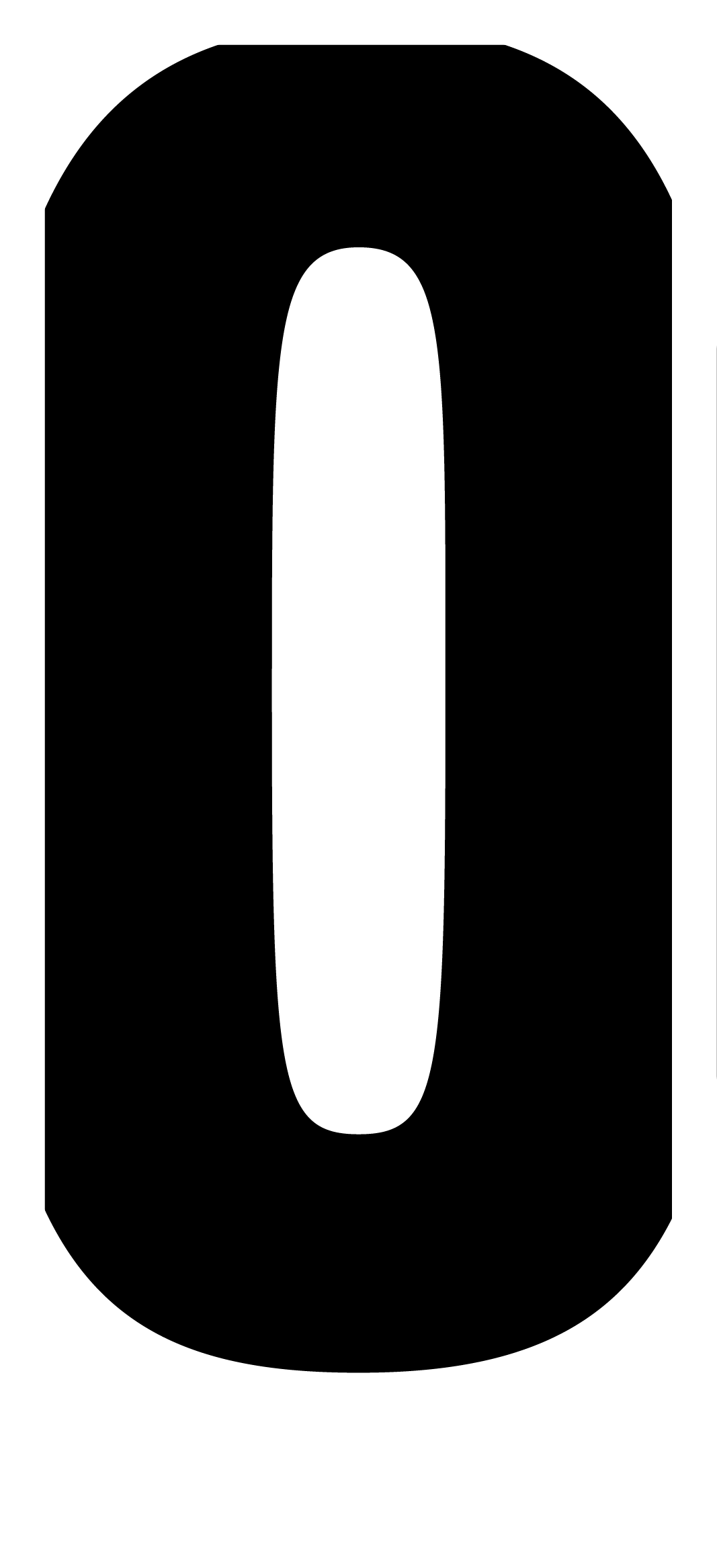








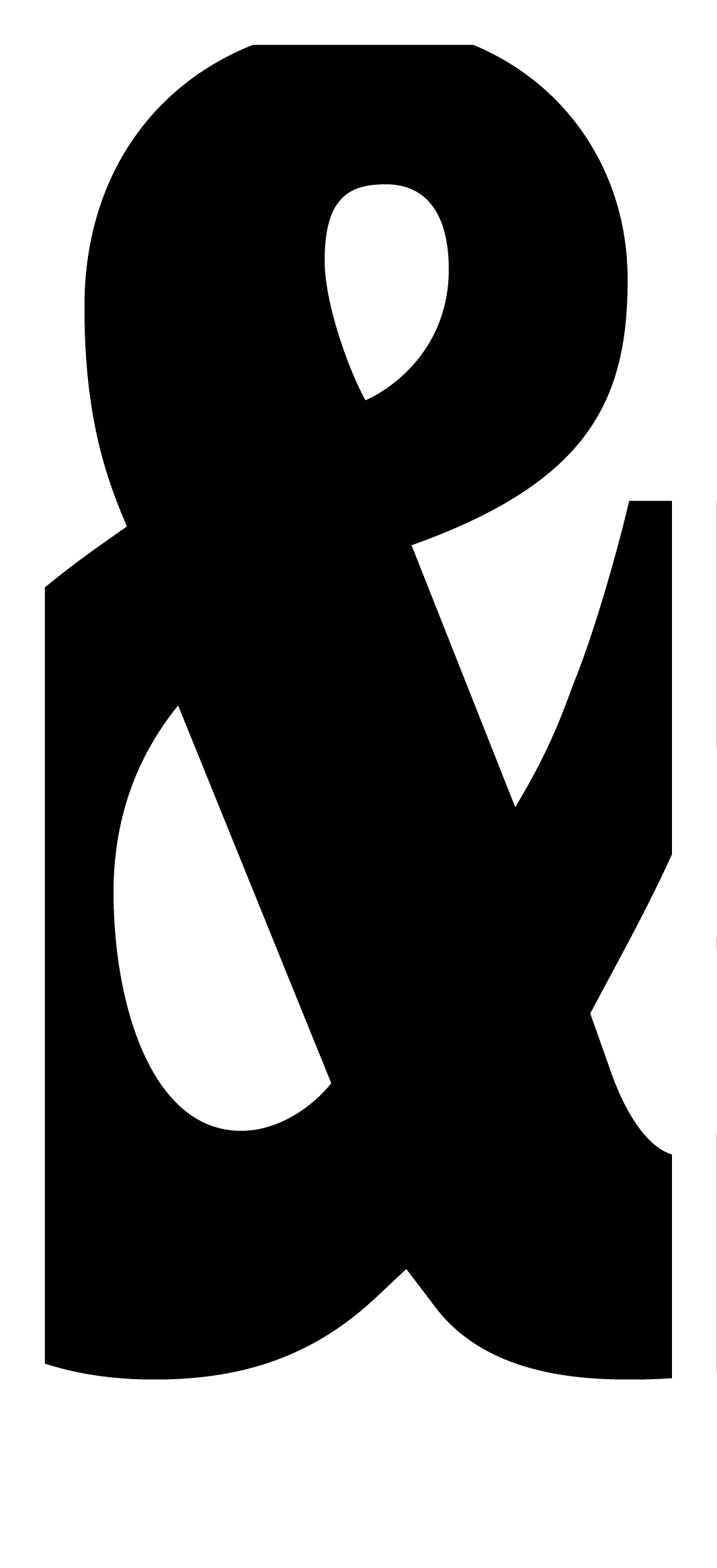


.png)
